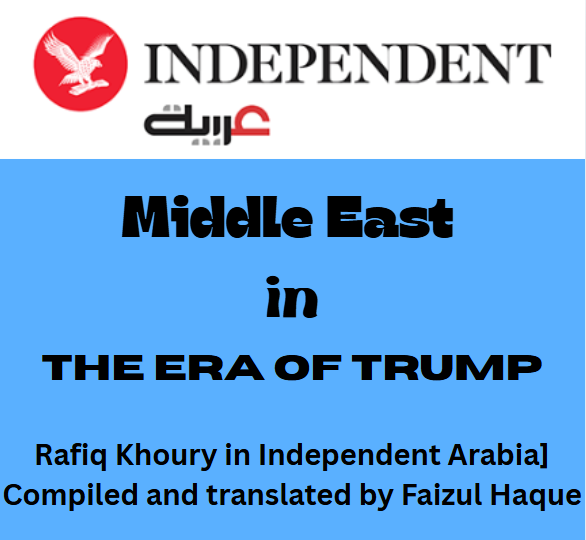Indeed, the Netanyahu government has begun expanding its occupation of previously liberated Lebanese lands and Syrian territories from the “buffer zone” established under the 1974 disengagement agreement, in addition to the occupied Golan Heights. According to the New York Times, the Israeli army is establishing military positions and installations inside the borders of both Lebanon and Syria. The Netanyahu government is making no secret of its desire to divide Syria and its claim to protect the Egyptian Druze, who maintain an Arab identity. On the strategic and geopolitical level, Israel is attempting to impose large areas free of weapons and troops on the surrounding Arab countries. It is even demanding that Egypt reduce its forces in the Sinai. This is a self-protecting fortress, in the style of the Russian Tsars, who used to say that they “could not rest easy in their nation unless the Russian army was on both sides of the border.”
All of this is one thing, and the change in American strategy is another. Under President Barack Obama, Washington began the “pivot” strategy: easing its commitments in the Middle East to focus on the big game in the Far East, where Russia and China are competing with America for wealth, power, and influence. This led to the Iranian nuclear agreement between Tehran and the five major powers in the Security Council, along with Germany. When President Trump came to the White House, he announced America’s withdrawal from the nuclear agreement and the imposition of “maximum pressure” on Iran. However, he limited himself to working on the “Abraham Accords” and did little to prevent the escalation of conflicts in the Middle East. President Joe Biden worked to diversify Obama’s policy.
However, Trump’s return to the presidency marked a gradual qualitative shift. His priorities are competition, conflict, and cooperation with China, as well as a trade war by raising tariffs to reduce the US trade deficit with China, Europe, Canada, Mexico, and others. However, through his unlimited support and reliance to Israel, he appeared to be implementing what Professor Mike Kimmage called for: “seeking to exploit escalation, not avoiding it.” While the focus was on the Far East and the urgent need to end the war in Ukraine and restore relations with Russia under the leadership of President Vladimir Putin, the Middle East has once again become the primary focus. More US forces have been dispatched to the region, along with two aircraft carriers and B-2 bombers. An ongoing campaign has been launched against the Houthis in Sana’a, who threaten shipping in the Red Sea in support of Hamas. They are armed and financed by Iran. Iran has been threatened with a difficult choice: abandon its nuclear and missile projects, its regional project, and the factions working for it, or face war. Trump’s shift from tactics without a strategy to a comprehensive strategy is no ordinary matter. In short, what the region faces are the wars of the president, who said he came to end wars. Netanyahu claimed to have “changed the Middle East,” but the one who is changing the Middle East is Trump, whom former Senate Republican Minority Leader Mitch McDonnell said “would be wise to build a foreign policy whose strong cornerstone is hard power.” All of this came after the “Al-Aqsa Flood,” and the second reading of it has not yet been completed. Professor Hal Brands is right to say, in the struggle over Eurasia, that “Trump will not lead America to isolationism, but to something far more deadly.”
[by Rafiq Khoury in Independent Arabia]
Compiled and translated by Faizul Haque




